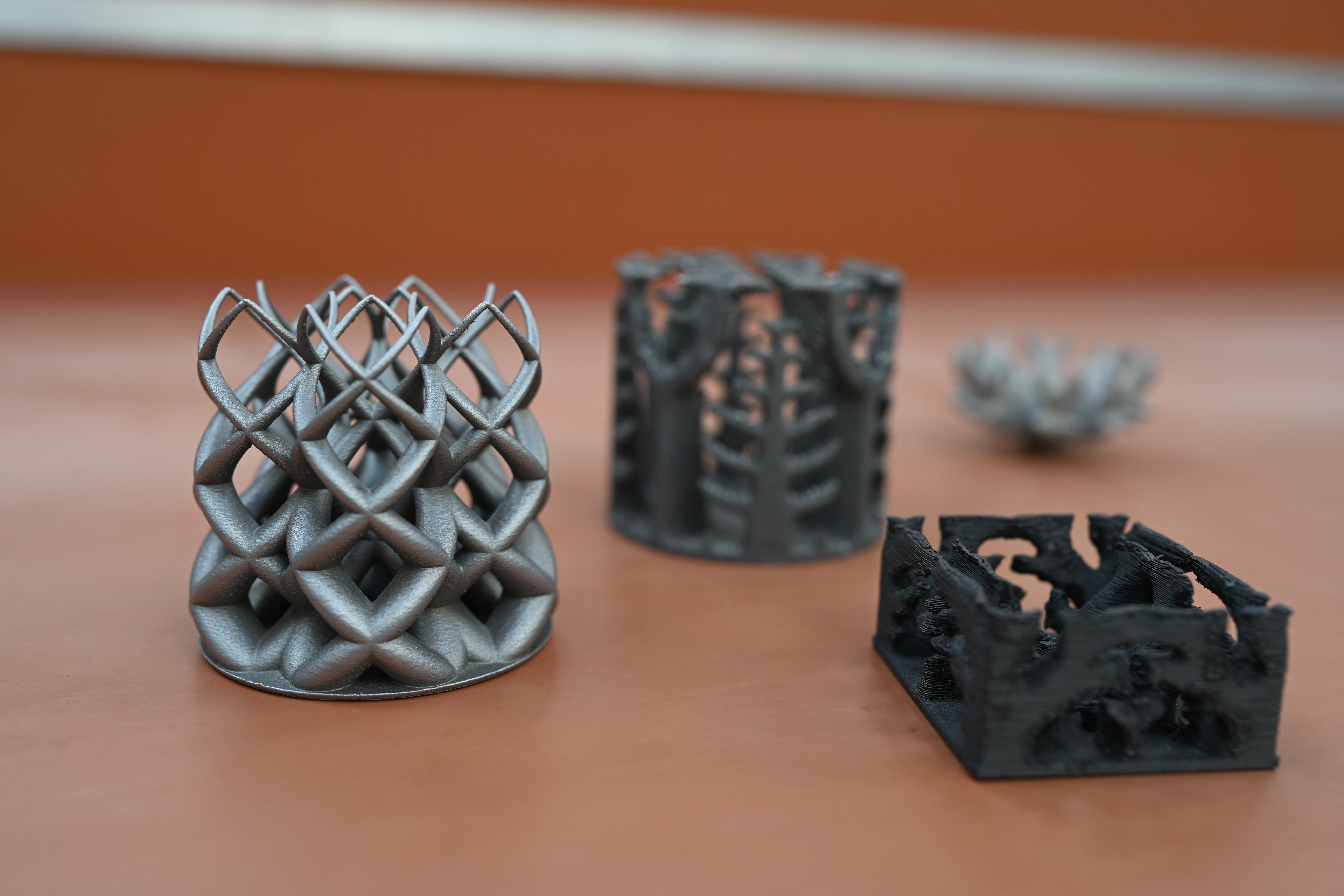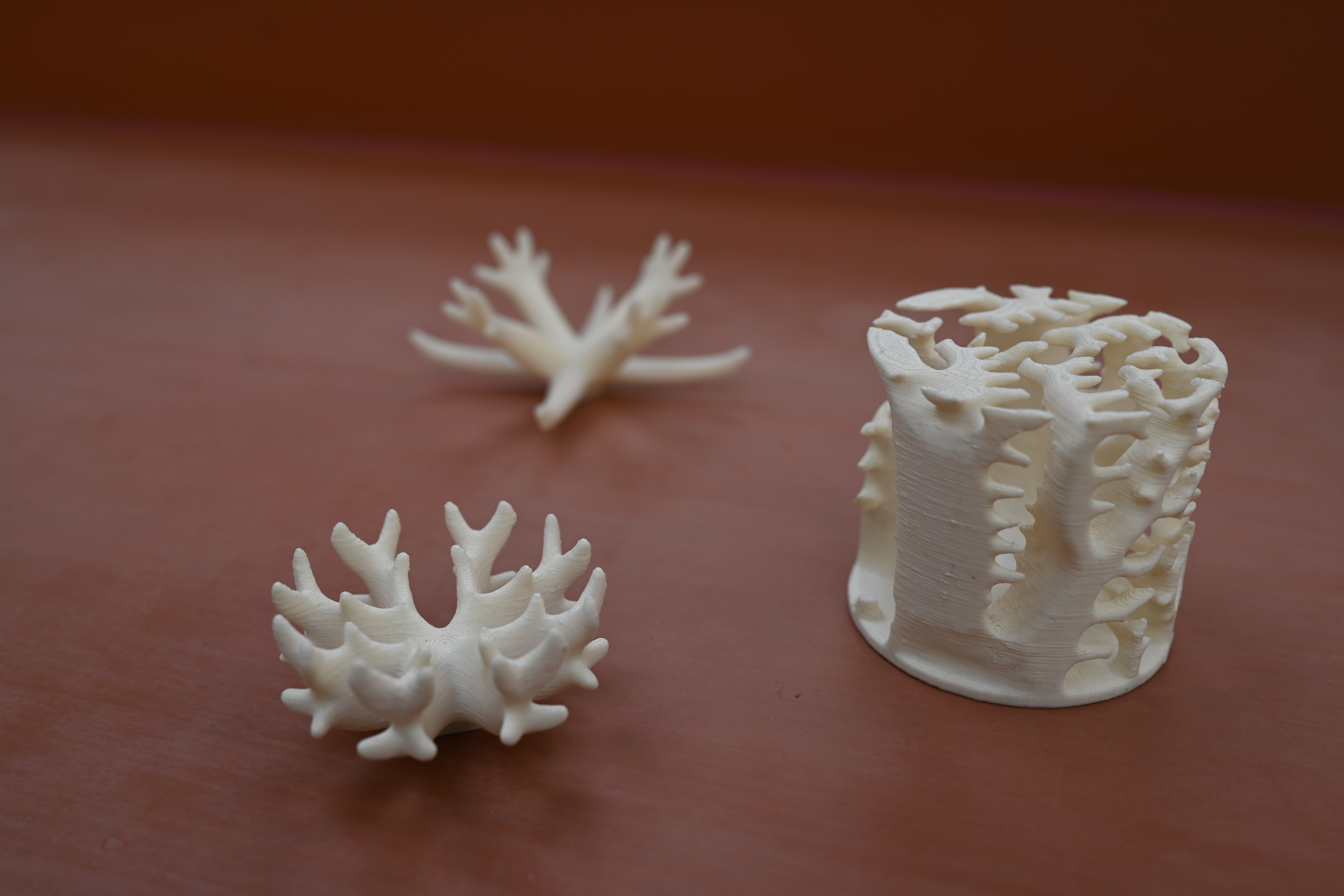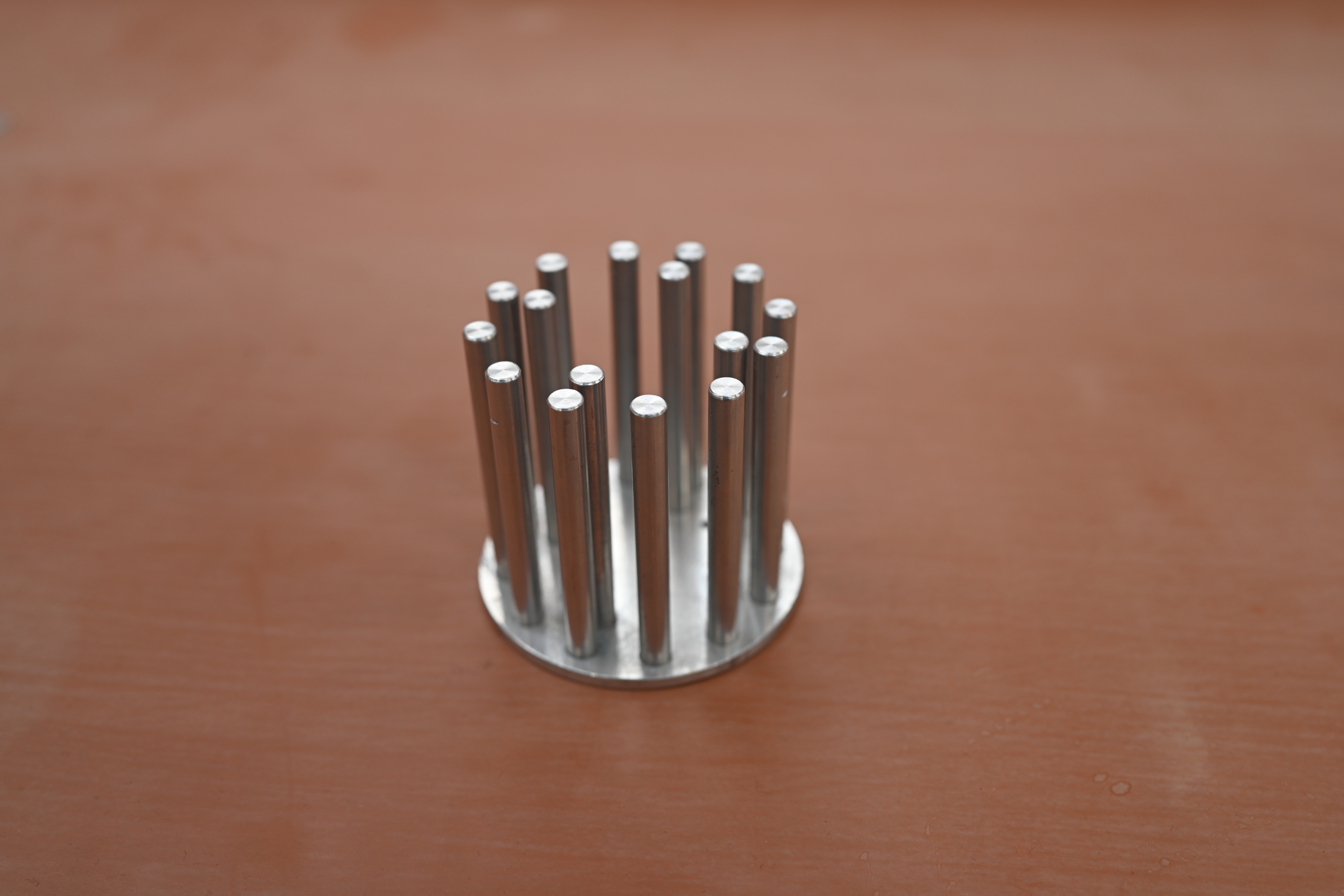
Hao and Joe are designing the heat exchangers of the future
Reducing energy waste has never been more important, and that is precisely what heat exchange is all about. In October, Chinese researcher Hao Li will begin a Marie Curie Postdoc Fellowship at the Faculty of Engineering in Odense and join Associate Professor Joe Alexandersen's research team. Together, they will figure out what the heat exchangers of the future should look like.
To some, it looks like corals. Others think of trees and bushes. And then there are those who see occult symbols and heavy metal imagery.
When Joe Alexandersen presents his research on future heat exchangers, it works a bit like a Rorschach test, he says. People see all sorts of things in the peculiar, knotty models he has on display in his office.

Joe Alexandersen is an associate professor of mechanical engineering at the University of Southern Denmark where he works on finding new and better ways to transfer heat.
Soon, he and his research team will be joined by Hao Li from China. Hao is also trained in mechanical engineering and is currently employed as a postdoc at Kyoto University, but he has just received one of the sought-after Marie Curie Postdoc Fellowships from the EU, so he will begin a postdoc position at the Department of Mechanical and Electric Engineering at the Faculty of Engineering in Odense in October.
And Joe Alexandersen is thrilled.
- Marie Curie Fellowships are highly competitive, so you really must be a top-notch applicant if you want to have any hope of getting one, the associate professor says.
-But Hao is exactly that.
Indispensable technology
Heat exchangers may not be the most eye-catching technology in our society, but they are an essential part of our industrial reality. Simply put, their job is to transfer heat from one place to another, preferably to a place where it can be useful, and with as little waste as possible along the way.
They are used, for example, in engines in cars, planes, and ships. They are used for cooling and heating buildings and can also be used to transfer excess heat from, for example, data centers to the district heating network.
Generally, they are used quite a bit in the energy sector, particularly for ground-source heating, solar heating, geothermal energy and in nuclear power plants. And they are necessary for a wide range of industries, particularly food production and chemical plants.
- I have previously worked a lot with heat sinks, which are a kind of heat exchanger that works by blowing air on them. They are used, among other things, on the back of chips in computers, Joe Alexandersen explains.
-But what Hao and I will be working on are heat exchangers that transfer heat from one liquid or gas to another liquid or gas.

Computer design
In general, when it comes to heat exchangers, the goal is to create structures with as much surface area as possible between the hot and cold streams, because it increases heat transfer, the associate professor explains. But it is a balancing act because the liquid, gas, or air must also be able to flow through, so one cannot overdo it.
And how does one find that balance?
Joe Alexandersen's research team uses a method called topology optimization. Here, a computer calculates what the most optimal design is in a given context, and using additive manufacturing – a 3D printer – the design can be produced.
-Often, the computer comes up with complex and surprising designs that you probably would never have thought of yourself, but afterward, you think, 'Oh yeah, of course,' says Joe Alexandersen.
Heat exchange and Lego Duplo
The problem is that these computer calculations require an enormous amount of computing power, and that is expensive.
Through topology optimisation and additive manufacturing, custom compact heat exchangers will be designed to cool the engines of tomorrow. However, the technology is mostly limited to academic problems, since existing approaches are restricted to macroscopic design with extreme computational cost being prohibitive for industrial applications, Hao Li explains.

Therefore, the two researchers must come up with a smarter calculation method, where one turns down the level of detail a bit, but without actually losing all the details.
- You can compare it to Lego. Right now, a lot of small Lego bricks are used for the designs that the computer simulates, and that makes the work heavy. But if you could replace the many bricks with some larger Duplo bricks that contained all the small bricks, it would become cheaper, says Joe Alexandersen.
More sustainable
However, we should not expect heat exchangers that look like corals, trees, bushes, and heavy metal logos to become common on the market right away.
- There's a good reason why heat exchangers look the way they do today. They are very simple in their design because it's relatively cheap to produce, says Joe Alexandersen.
- If our designs are going to make it into the industry, it requires developments in additive manufacturing. And in the beginning, it will probably only be within areas where high efficiency is very important, and where people are willing to pay the cost to get that extra bit.
However, it's possible to take some of the principles from their computer-generated designs and use them in cheaper, mass-produced heat exchangers.
-You can learn from what we get out of the computer and use it for something, even if you don't manufacture that exact heat exchanger. For example, we once made a cylindrical heat sink where we found that it worked best if there wasn't too much material in the middle. That was new compared to traditional designs and could easily be transferred.

The researchers are in no doubt that optimizing heat exchangers is extremely important, especially in a time of climate and energy crisis.
- Our project closely relates to UN Sustainable Development Goals number seven, which is about affordable and clean energy, and number twelve, which is about responsible consumption and production, says Hao Li.
- Through the automated design of highly performant heat exchangers, sustainable consumption and production will be directly impacted by increasing energy efficiency and reducing material use in a wide range of industries, such as aviation, automotive and heavy industry.